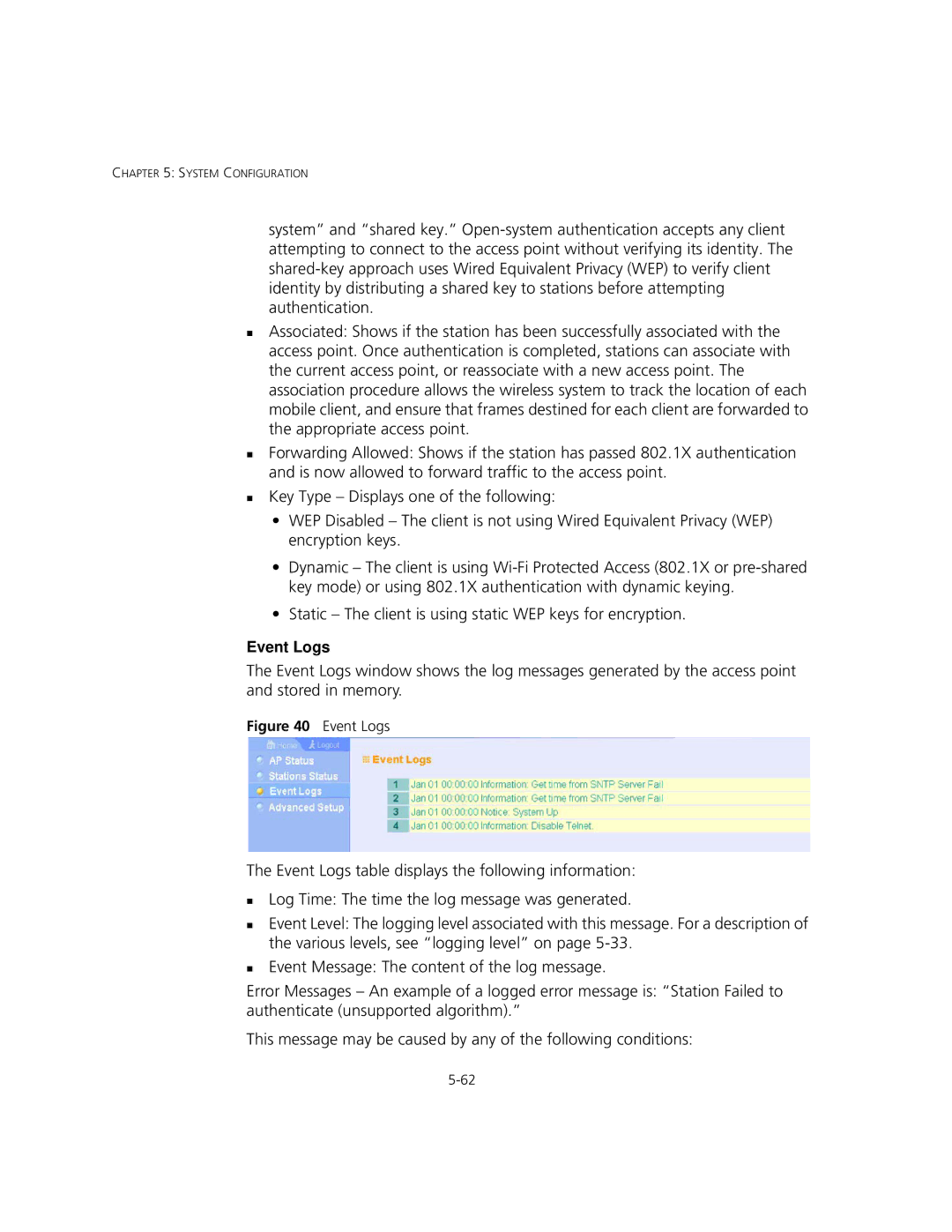
CHAPTER 5: SYSTEM CONFIGURATION
system” and “shared key.”
Associated: Shows if the station has been successfully associated with the access point. Once authentication is completed, stations can associate with the current access point, or reassociate with a new access point. The association procedure allows the wireless system to track the location of each mobile client, and ensure that frames destined for each client are forwarded to the appropriate access point.
Forwarding Allowed: Shows if the station has passed 802.1X authentication and is now allowed to forward traffic to the access point.
Key Type – Displays one of the following:
•WEP Disabled – The client is not using Wired Equivalent Privacy (WEP) encryption keys.
•Dynamic – The client is using
•Static – The client is using static WEP keys for encryption.
Event Logs
The Event Logs window shows the log messages generated by the access point and stored in memory.
Figure 40 Event Logs
The Event Logs table displays the following information:
Log Time: The time the log message was generated.
Event Level: The logging level associated with this message. For a description of the various levels, see “logging level” on page
Event Message: The content of the log message.
Error Messages – An example of a logged error message is: “Station Failed to authenticate (unsupported algorithm).”
This message may be caused by any of the following conditions:
